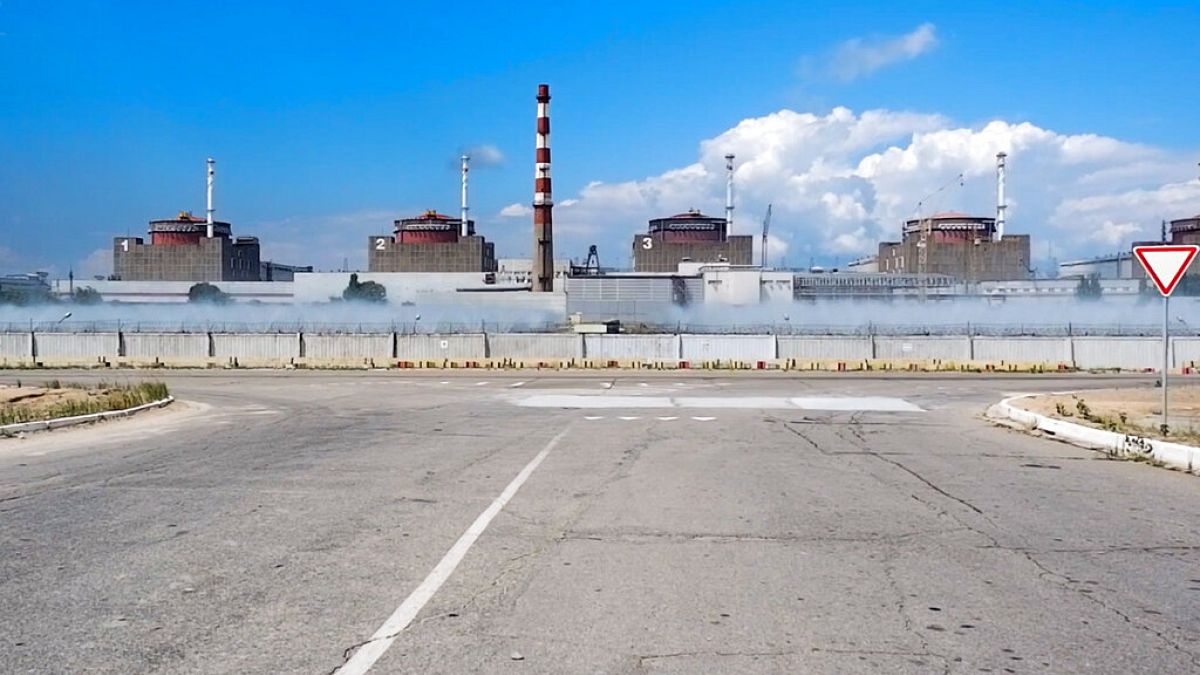The International Atomic Energy Agency (IAEA) has expressed concern over the deteriorating safety at the Zaporizhzhia nuclear power plant in southeastern Ukraine. The largest nuclear power plant in Europe has been under Russian control since the country’s invasion of Ukraine in February 2022. A recent drone strike near the plant has raised alarms, with both Russia and Ukraine accusing each other of carrying out the attack. The IAEA director general, Rafael Mariano Grossi, has called for maximum restraint from all sides and strict observance of safety protocols at the plant.
The drone strike targeted a perimeter access road used by staff near the Zaporizhzhia plant, raising concerns about the safety of the plant’s operations. While the plant is currently dormant, both Russia and Ukraine have accused each other of attempting to sabotage its operations. The strike occurred close to essential cooling water sprinkler ponds and the Dniprovska power line, the only remaining power supply to the plant. The IAEA team who visited the site confirmed that there were no casualties and no impact on the nuclear power plant equipment, but there was damage to the road near the plant’s two main gates.
The safety situation at the Zaporizhzhia plant is particularly concerning as the conflict between Russia and Ukraine continues to escalate. Ukraine has claimed to have taken control of several settlements in the Kursk region, further heightening tensions between the two countries. Russia has expressed interest in discussing the attack on the Zaporizhzhia plant with the IAEA, indicating a willingness to address safety concerns at the facility. The IAEA has reiterated the importance of adhering to safety protocols to prevent further escalation of nuclear safety and security dangers at the plant.
The IAEA’s concern over the safety at the Zaporizhzhia plant highlights the potential risks associated with the ongoing conflict between Russia and Ukraine. The recent drone strike near the plant has raised alarms about the safety of the facility, with experts on site confirming the detonation and assessing the damage caused by the attack. While there were no casualties or impact on the plant’s equipment, the incident underscores the fragile state of nuclear safety in the region. Both Russia and Ukraine must exercise maximum restraint and adhere to safety protocols to prevent further escalation of risks at the Zaporizhzhia plant.
The deteriorating safety at the Zaporizhzhia plant underscores the urgent need for cooperation and dialogue between Russia, Ukraine, and the international community. The IAEA’s call for maximum restraint and strict observance of safety principles at the plant is crucial to ensuring the protection of nuclear facilities in the region. The drone strike near the plant serves as a stark reminder of the potential consequences of the ongoing conflict and the importance of prioritizing nuclear safety and security. As tensions persist between Russia and Ukraine, it is imperative that both sides prioritize the safety of nuclear facilities to prevent any further escalation of risks in the region.
In conclusion, the deteriorating safety situation at the Zaporizhzhia nuclear power plant in Ukraine is a cause for concern, as highlighted by the recent drone strike near the facility. The IAEA’s call for maximum restraint and adherence to safety protocols is crucial to preventing further escalation of risks at the plant. As the conflict between Russia and Ukraine continues to unfold, it is essential for both countries to prioritize the safety of nuclear facilities to prevent any potential threats to the region’s nuclear security. Cooperation and dialogue between all parties involved are essential to ensuring the protection of nuclear facilities and promoting peace and stability in the region.











